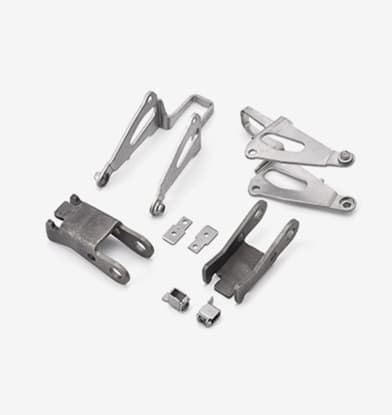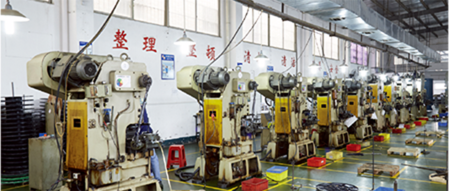Characteristics and Applications of Fine Blanking Parts
Fine blanking is a precision sheet metal blanking process developed on the basis of ordinary blanking technology.
Factors to Consider for Fine Blanking Parts
Fillet Radius
The corners of the inner and outer shapes of fine blanking parts should be connected with fillets. If the fillet radius is too small, the shear surface of the sharp corner is prone to tearing, and the cutting edge of the die is prone to chipping or severe wear. The minimum fillet radius is related to the material thickness, mechanical properties, and the size of the sharp and included angles.
Hole Diameter and Hole Spacing
The minimum hole diameter of fine blanking parts is related to the material thickness and mechanical properties.
Slot Width and Slot Edge Distance
Fine blanking of slots is slightly more difficult than fine blanking of round holes. The main factor is the degree of resistance to longitudinal bending of the punch, which is related to the slot width, slot length, and their ratio, and can be used to determine the adaptability of a part to the fine blanking process.
Narrow Cantilevers
Fine blanking of narrow cantilevers involves the punch enduring greater lateral pressure and complicated stress conditions, making it more disadvantageous compared to fine blanking of narrow slots. Generally, the minimum slot width can be multiplied by a factor of 1.3 to 1.4.
Tooth Shape
When fine blanking teeth, the tooth top and root must be rounded. The tooth width on the pitch circle is approximately 60% of the material thickness. The minimum module "m" and the minimum pitch circle tooth width "b" can usually be determined.
The Inner and Outer Shape Tolerances of Fine Blanking Parts
Generally, the outer shape tolerance is larger than the inner shape tolerance. Materials with lower strength can achieve higher precision and smaller deviations more easily than high-strength materials. The thicker the material, the larger the tolerance value.
In addition, the surface roughness of fine blanking parts is related to the precision and maintenance of the die, the material of the blanking part, and lubrication during fine blanking. Under normal maintenance and sharpening conditions, the surface roughness of fine blanking parts is Ra 0.8 to 1.6μm.
Under certain good process conditions, fine blanking parts can achieve an entirely smooth blanking surface. To improve the economic efficiency of fine blanking production, a small amount of tearing is allowed on the burr side of the blanking part, commonly expressed as the smooth surface ratio (the proportion of smooth surface height to material thickness). Additionally, burrs on fine blanking parts are unavoidable. When the burr height exceeds 0.2mm during fine blanking of thick materials, the die needs to be sharpened. Burrs can be removed before use by mechanical vibration or abrasive belt grinding. UV-resistant, not easy to discolor.
Application of Fine Blanking Parts
Fine blanking parts have a wide range of applications and are widely used in everyday life in fields such as watches, motorcycles, textile machinery, agricultural machinery, computers, household appliances, instruments, and measuring tools. Especially in the automotive industry, from the transmission system, gearbox, seats, safety systems, braking systems, to door locks, window lifters, shock absorbers, and more, fine blanking parts are present. Additionally, many cast and forged blanks can be used to replace original cutting processes, producing qualified components with promising application prospects.
After many years of development, as one of the trusted precision fine blanking parts manufacturers, ORIENSON has accumulated a wealth of experience in the development, design, and manufacturing of precision parts and fine stamping dies. With a team of experienced professionals and complete production and testing equipment, we welcome you to contact us.

 English
English 





